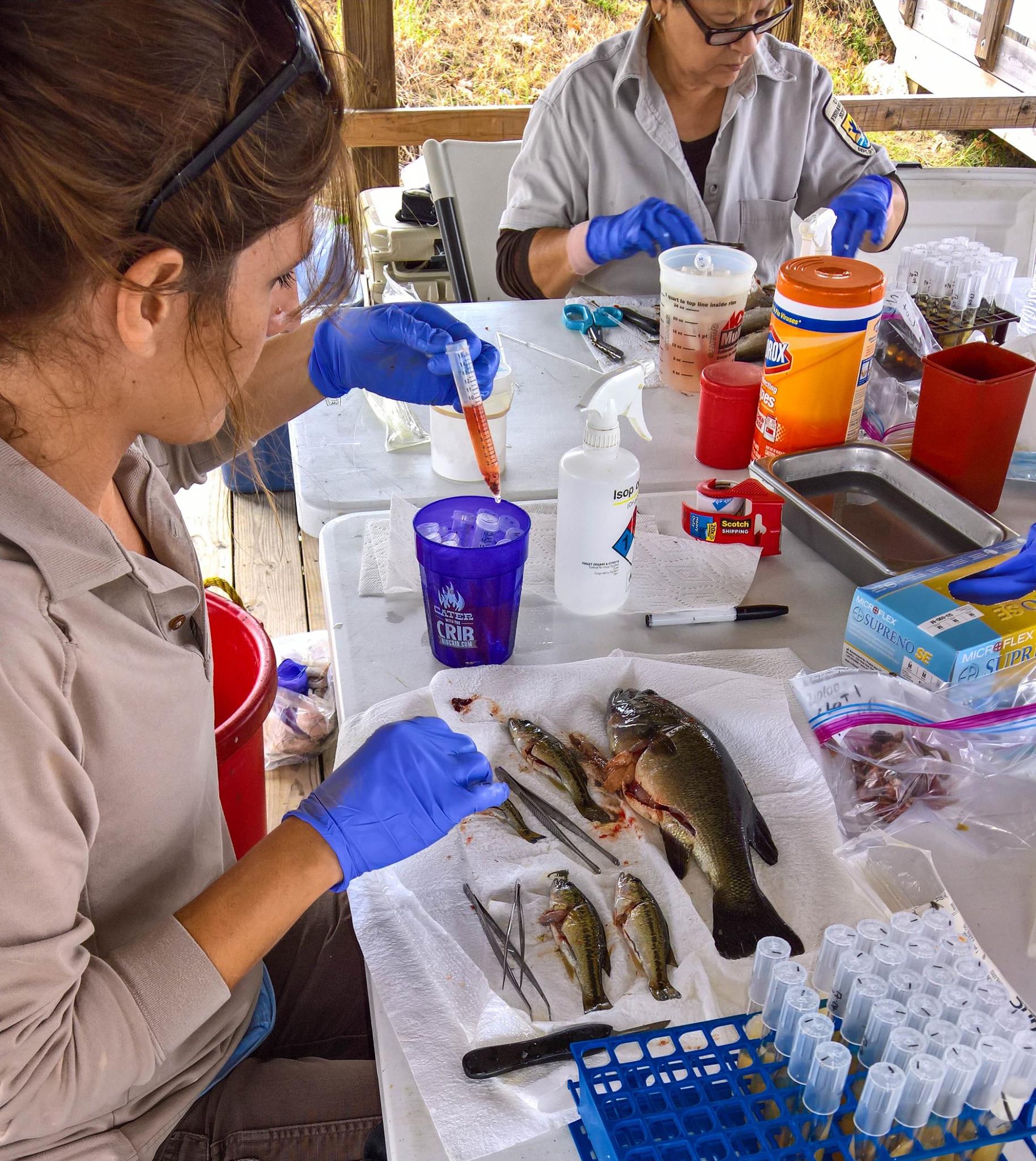By Darlene McCormick Sanchez
Lone Star Outdoor News
The results of a Lake Fork fish survey in November found signs of a virus once problematic for largemouth bass but no new pathogens or diseases of concern.
Testing found signs of the largemouth bass virus (LMBV) at Lake Fork that once plagued lakes in the 1990s. The good news is that fish develop resistance to the virus, so it is no longer seen as a threat.
Kevin Storey, district manager of Tyler North District Inland Fisheries, said the virus was cause for concern in the past because of the large fish kills it created.
“It seems that once there’s been a fish kill — there’s no reoccurrence,” he said. “It seems to be the same pattern throughout the country.”
LMBV was the causative agent of large fish kills experienced on Lake Sam Rayburn in 1998 and on Lake Fork between June and August 1999. LMBV was confirmed in 26 bass fisheries in Texas and, in many cases, the virus resulted in mortalities, especially larger fish. As recently as in 2011, LMBV was detected in samples from Lake Fork.
Jason Woodland, a fish biologist with the U.S. Fish and Wildlife Service in Dexter, New Mexico, who initiated the study at Lake Fork, said the idea of the wild fish survey is to test for pathogens to help fishery managers across the United States deal with potential problems. Woodland said that there is no known treatment for LMBV, but agreed with Storey in that it would be rare for the virus to strike the same reservoir twice.
Tissue samples were taken from the kidney, spleen, and swim bladder from a sample of 60 largemouth bass. The tissues were pooled in 12 groups of five fish, and two of these groups tested positive for LMBV.
Storey said the USFWS had some extra funding that made the sampling possible. State staff assisted in determining if there were any unknown threats to fish health. Samples were taken at Lake Fork from largemouth bass, redear sunfish, bluegill, longear sunfish, channel catfish, gizzard shad, bowfin, freshwater drum and black crappie.
The sampling also helps determine if pathogens are occurring in both the wild and hatcheries. One example would be to determine if whirling disease and the Asian tapeworm are showing up in wild fish populations.


